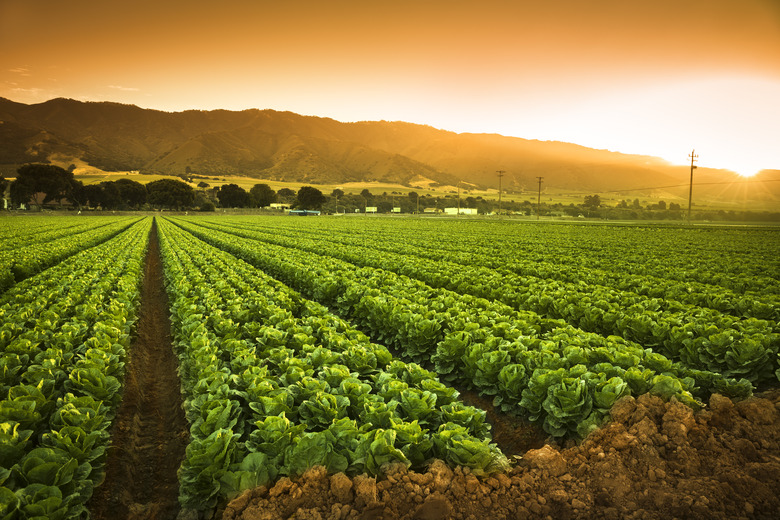4 Types Of Soil Conservation
Soil conservation helps protect the land, prevent erosion and preserve soil nutrients on land that's being used for farming. Soil conservation techniques also help minimize the damage that development can do to surrounding open space.
Why Soil Conservation?
Why Soil Conservation?
Good soil conservation helps to put nutrients back into the soil. There are many types of conservation practices that can help prevent damage to the soil and can even help farms become part of a thriving ecosystem. Soil conservation treats soil as a living ecosystem.
Inhabitants of that ecosystem all have roles in keeping the soil fertile and healthy by breaking down organic matter, releasing nutrients and helping create good air and water circulation within the soil.
This happens with good soil conservation techniques like no-till farming and crop rotation. These are part of the good conservation practices definition.
No-Till Farming
No-Till Farming
Farming land without tilling, or no-till farming, is something soil conservation professionals recommend. Tilling farmland after each crop disturbs the soil and reduces the ability of the soil to hold water. No-till farming means the soil is left alone and the remainder of the last crop decomposes into the soil.
That allows dead plant matter to decompose and provide energy to the soil. Soil has organisms living in it that needs dead plant and animal matter for food and energy, and no-till farming helps replenish the soil regularly.
No-tilled fields retain many beneficial organisms like earthworms and others that help feed the soil. The field is also less likely to evaporate water, helping it retain water better. This method is less expensive and more efficient.
Crop Rotation and Cover Crops
Crop Rotation and Cover Crops
Growing corn year after year in the same field helps deplete the soil of essential nutrients. Rotating any crop means the field is less likely to be affected by disease because the pathogens and weeds that cause them don't build up.
Rotating susceptible crops with resilient crops gets the best results. Growing crops that need different nutrients helps prevent fields from building up excess nutrients. This helps not only to make the soil healthier but to increase crop yields and profits. Legumes, like clover and alfalfa, are often used as a natural way to fertilize and add nutrients to the soil.
Even a field that's rotated between corn and soybeans only has living roots for about half the year. Planting a cover crop on a field when it's not in use adds to the soil quality. Some common cover crops are sweet clover, alfalfa, rye and winter wheat. When planted along steep slopes and stream and river banks, these cover crops help provide ample erosion control, keeping the soil in the fields and not washing off into waterways.
Contour Farming on Hillsides
Contour Farming on Hillsides
When farming on a hillside, farmers till and plant along the contour rather than allowing the soil to run off the hillside. The furrows and rows of plants prevent rainwater from washing soil off the hill into lower-lying areas and help keep the soil healthier for future crops.
Windbreaks and Stream Buffers
Windbreaks and Stream Buffers
Wind can blow soil off fields, especially freshly planted fields, and bare stream banks. To prevent this, many farmers plant rows of trees to keep the wind from damaging the soil. Tree roots also help to hold the soil in place.
Vegetation planted along a stream or riverbank helps hold the soil in place and prevents it from running off the fields and into the rivers. When soil runs into waterways, it not only carries off nutritious topsoil but it also depletes the living organisms in that waterway.
Buffers, whether stream or windbreaks, help provide wildlife habitat for small animals, birds and insects. Forested stream buffers can shade the waterway and make it more friendly for trout, crayfish and other fragile aquatic life like small stream invertebrates.
Cite This Article
MLA
Gardner, Karen. "4 Types Of Soil Conservation" sciencing.com, https://www.sciencing.com/4-types-of-soil-conservation-12236495/. 7 March 2019.
APA
Gardner, Karen. (2019, March 7). 4 Types Of Soil Conservation. sciencing.com. Retrieved from https://www.sciencing.com/4-types-of-soil-conservation-12236495/
Chicago
Gardner, Karen. 4 Types Of Soil Conservation last modified August 30, 2022. https://www.sciencing.com/4-types-of-soil-conservation-12236495/
